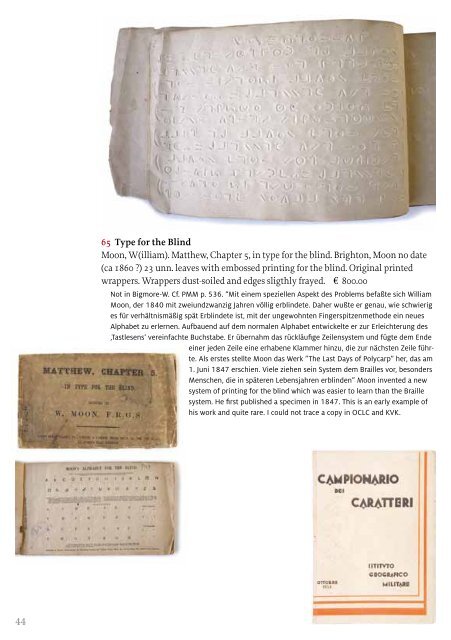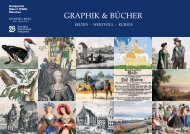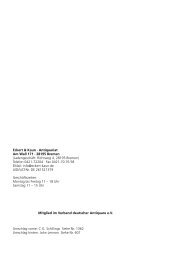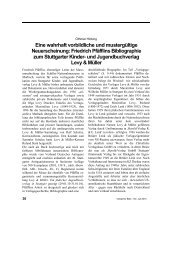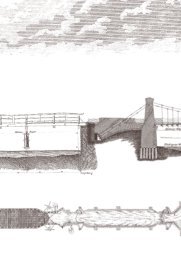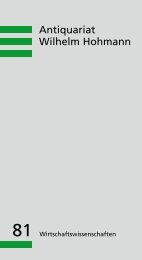Typography and Printing
Typography and Printing
Typography and Printing
Create successful ePaper yourself
Turn your PDF publications into a flip-book with our unique Google optimized e-Paper software.
44<br />
65 Type for the Blind<br />
Moon, W(illiam). Matthew, Chapter 5, in type for the blind. Brighton, Moon no date<br />
(ca 1860 ?) 23 unn. leaves with embossed printing for the blind. Original printed<br />
wrappers. Wrappers dust-soiled <strong>and</strong> edges sligthly frayed. E 800.00<br />
Not in Bigmore-W. Cf. PMM p. 536. “Mit einem speziellen Aspekt des Problems befaßte sich William<br />
Moon, der 1840 mit zweiundzwanzig Jahren völlig erblindete. Daher wußte er genau, wie schwierig<br />
es für verhältnismäßig spät Erblindete ist, mit der ungewohnten Fingerspitzenmethode ein neues<br />
Alphabet zu erlernen. Aufbauend auf dem normalen Alphabet entwickelte er zur Erleichterung des<br />
‚Tastlesens‘ vereinfachte Buchstabe. Er übernahm das rückläufige Zeilensystem und fügte dem Ende<br />
einer jeden Zeile eine erhabene Klammer hinzu, die zur nächsten Zeile führte.<br />
Als erstes stellte Moon das Werk ”The Last Days of Polycarp” her, das am<br />
1. Juni 1847 erschien. Viele ziehen sein System dem Brailles vor, besonders<br />
Menschen, die in späteren Lebensjahren erblinden” Moon invented a new<br />
system of printing for the blind which was easier to learn than the Braille<br />
system. He first published a specimen in 1847. This is an early example of<br />
his work <strong>and</strong> quite rare. I could not trace a copy in OCLC <strong>and</strong> KVK.


